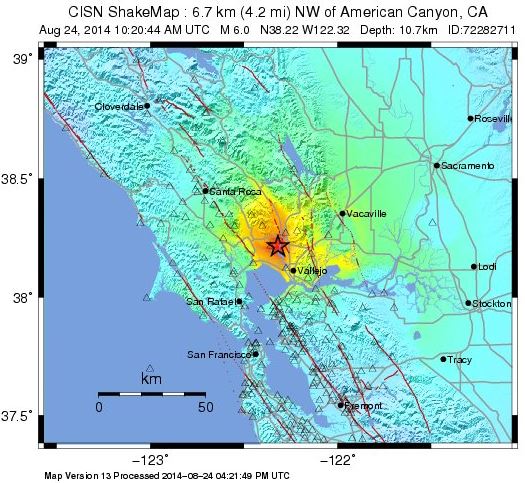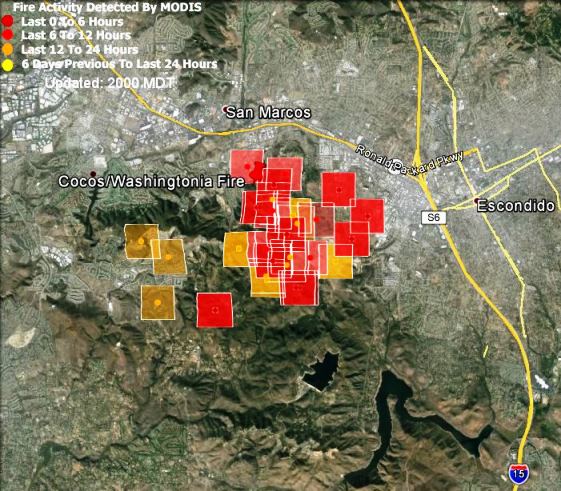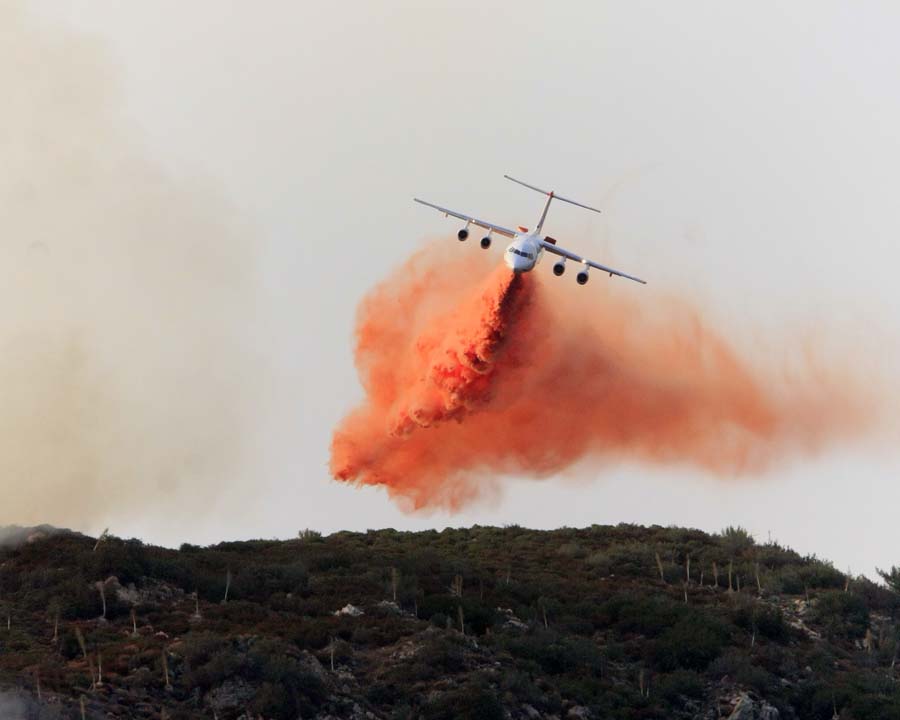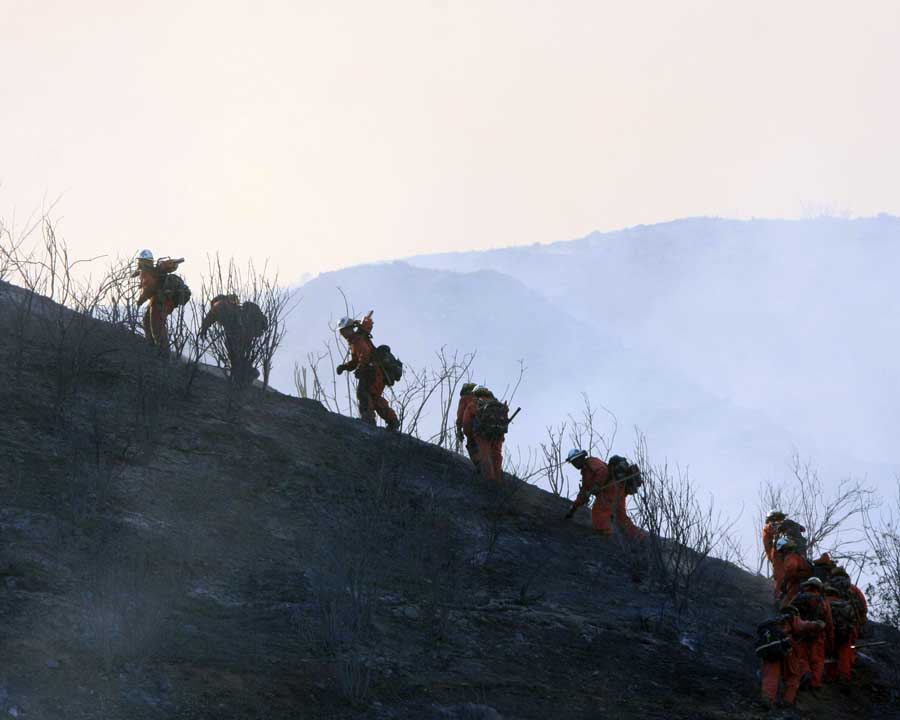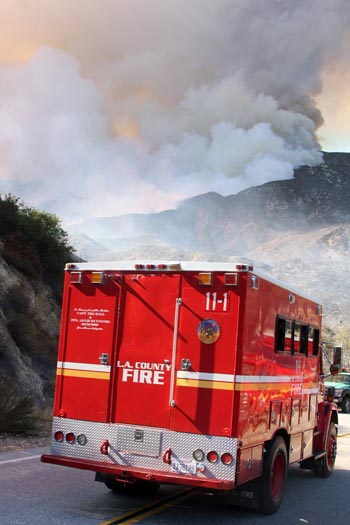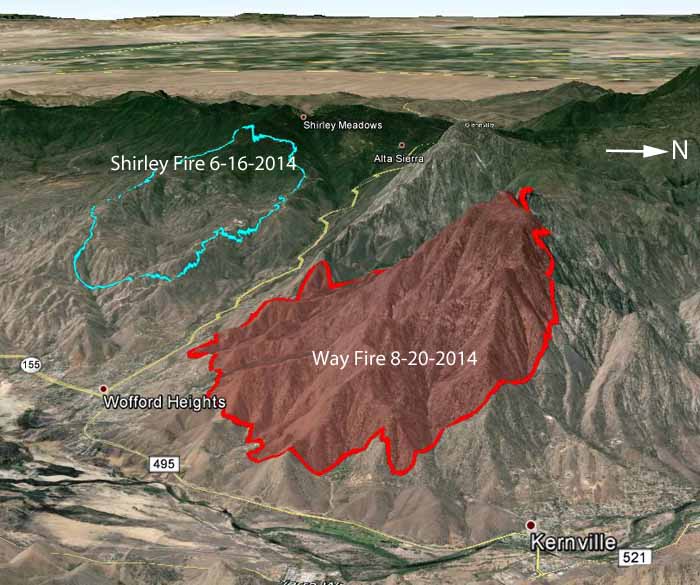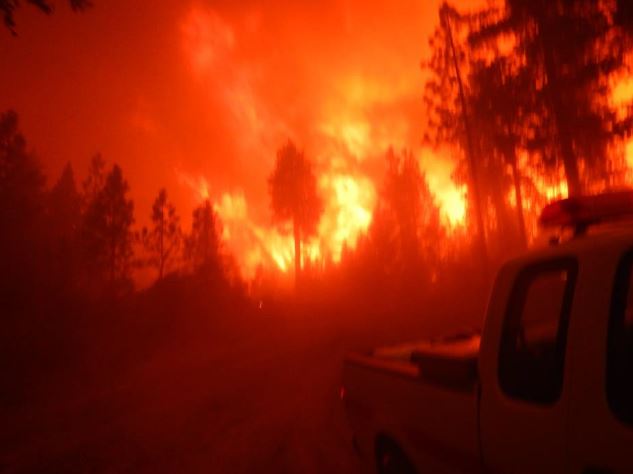(UPDATED at 5:32 p.m. PDT, August 24, 2014)
As we noted below, the U.S. Forest Service Regional Office in Vallejo, approximately 5 miles south of the epicenter, was affected by this morning’s 6.0 earthquake. Further assessments revealed a water line break on the fourth floor that caused extensive damage. Additional problems were also found, however the USFS is saying the building is structurally sound. An Incident Management Team is working on the cleanup and the office will be closed through Tuesday while a contract crew deals with the water and further assessments are completed. All employees are authorized administrative leave for August 25th and 26.
****
(UPDATED at 12:55 p.m. PDT, August 24, 2014)
At a news conference that just finished, Napa Fire Chief Mike Randolph said resources in the city include four strike teams of Type 1 (structure) engines, one strike team of water tenders, and two urban search and rescue task forces.
The fire department has received 100 calls reported natural gas odors. They have also been assessing damaged structures to determine if anyone needs to be rescued, but have found none.
Approximately 50 water main breaks have been reported.
California Office of Emergency Services is live-streaming video from the state Operations Center.
****
(Originally published at 9:39 a.m. PDT August 24, 2014; updated at 9:27 a.m. PDT, August 24, 2014)
The 6.0 magnitude earthquake that struck the Napa area north of San Francisco at 3:20 a.m. PDT today not only caused damage to structures, roads, and water mains, but several mobile homes caught fire when they were shaken off their foundations, rupturing natural gas lines. The broken water main made it difficult for firefighters to suppress the fires, using only the booster tanks in the engines until water tenders arrived.
Battalion Chief Scott McLean, a spokesperson for the California Department of Forestry and Fire Protection (CAL FIRE), said the agency has not had any reports of vegetation fires related to the earthquake, but 10 CAL FIRE engines, plus 2 Napa County engines and 2 Napa County water tenders are assisting the city of Napa. There are a total of 4 strike teams on order — 3 Type 1 strike teams (structure engines) and 1 Type 3 (brush engine) strike team. Each strike team has 5 engines plus a strike team leader. Two Type 1 urban search and rescue teams have been ordered, Chief McLean said.
There are no CAL FIRE aviation assets are working the incident, but Chief McLean said Helicopter 104 is available if needed.
U.S. Forest Service spokesperson Stanton Florea said their Region 5 headquarters in Vallejo, approximately 5 miles south of the epicenter, sustained damage that is being evaluated.

